It is about that time of year…you know, where the paper work starts cranking and you start seeing which kids might need a little extra boost. Which means that RTI is about to crank up as well. RTI has the potential to be very overwhelming- especially because it seems to differ from district to district and state to state. Here are a few tips to keep yourself from drowning in crazy town papers.
I found that RTI was just one more thing on my plate, and unless I made time for it….it slipped through the cracks. Terrible, right? Once I set a schedule for RTI, it was much more manageable. Every Friday I pulled individuals and strategy groups during guided reading time. I used this time to implement interventions and assess with data probes.
I used a simple checklist system to keep track of when I met with and completed interventions with students.
You can also use this RTI class overview sheet.
The sheet has space for 3 students. You can record the student’s name, up to three strategies and the dates meet and probes for each strategy.
Whenever possible, use probes that are easy to administer and easy to score- cut and dry! Rubrics are great, but can cause concerns because opinions can color the score.
For students struggling with fluency, use fluency passage (Reading A to Z is a great resource for this) and score students progress of multiple readings of the same text.
For students struggling with reading comprehension, have them read a story and then retell the story using a story frame.
This RTI pack for number sense has all the strategies and probes, ready to go, in one place!
This RTI pack for sight words has all the strategies and probes, ready to go, in one place!
There are so many amazing website to help with RTI. Have you checked out interventioncentral? There are TONS of FREE ideas for all kinds of academic and behavior concerns.
I LOVE this idea from Lori at Conversations In Literacy!
She suggested using the student activities from FCCR as your intervention activities. Isn’t that brilliant?!! You can read all about how she organized these here.
Jen Jones is an RTI guru. She is a fantastic resource and has several RTI materials in her TpT store.
She shared this If/ Then menu in her store and and on her blog. It is a fantastic freebie if you are trying to figure out appropriate interventions for your students.
I think this tip may be the most frustrating of all. Staying organized SEEMS easy…until the leaning tower of paperwork appears!
I had a binder. In the binder I had a section for each child. I used post it notes to divide the student’s sections. Behind each section, I put all documentation and any materials for interventions that stored easily in a binder (fluency passages, comprehension passages, sight word cards, etc).
To help you keep organized, I have a HUGE 20 + page freebie of RTI materials! Click on the picture to get your freebie! It has all the documentation sheets included in this post, plus several more! I hope it helps!
I asked some Facebook Followers to share some tips.These are awesome!
Lyssa
Turner Sahadevan said,
“I put sticky notes in my lesson plan book on
days I need to collect certain ongoing data. It really helps!”
Turner Sahadevan said,
“I put sticky notes in my lesson plan book on
days I need to collect certain ongoing data. It really helps!”
I have NEVER thought of using Google Docs! This is brilliant! Zanah
McCauley shared,
“I use google docs to keep myself organized
with my schedule, grouping, and data!”
McCauley shared,
“I use google docs to keep myself organized
with my schedule, grouping, and data!”
This system is similar to my system! Brittany
Naujok said,
“I keep a binder with a tab for each kid and
their RtI paperwork and data behind it. I then label in my lesson plan with
sticky notes when I need to collect data on certain days and from certain kids.”
Naujok said,
“I keep a binder with a tab for each kid and
their RtI paperwork and data behind it. I then label in my lesson plan with
sticky notes when I need to collect data on certain days and from certain kids.”
Gloria Mayers has a whole system going! She said, “For RTI, I
keep a list of students receiving a particular intervention, marking if they’re
present for each daily session, and results of each scheduled assessment. I
also have another section for each individual student where I keep their
personal data from RTI,
and copies of reports pulled on their computerized assessments. It may sound
more complicated than it really is, but it is helpful to see how each RTI group
is progressing, and then to see more detailed individualized results.”
keep a list of students receiving a particular intervention, marking if they’re
present for each daily session, and results of each scheduled assessment. I
also have another section for each individual student where I keep their
personal data from RTI,
and copies of reports pulled on their computerized assessments. It may sound
more complicated than it really is, but it is helpful to see how each RTI group
is progressing, and then to see more detailed individualized results.”
How do YOU feel about RTI? Are you able to keep organized or is it a hot mess?
Click here for this great pack of FREE math centers, plus get tips and updates from me!
Mandy Gregory is a 2007 and 2012 Teacher of the Year. She has taught Kindergarten- 4th grades in both the general education and inclusion settings. She is currently a 1st grade Special Education teacher. She is the owner and creator of Mandy’s Tips for Teachers website (www.mandystipsforteachers.com) and has over 13 years of teaching experience. She is married with two beautiful children.


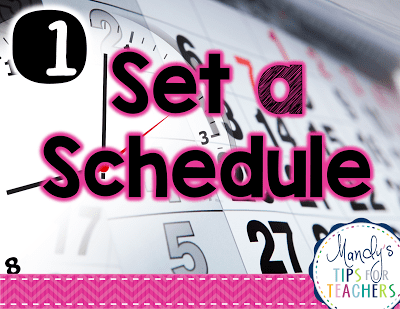
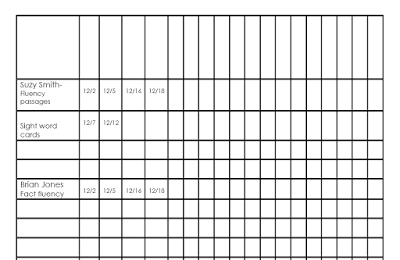
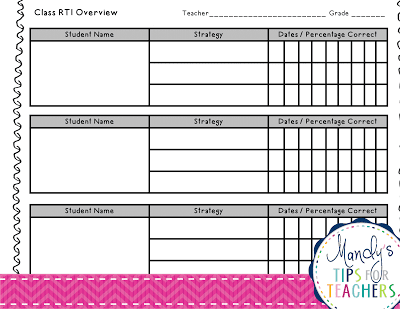
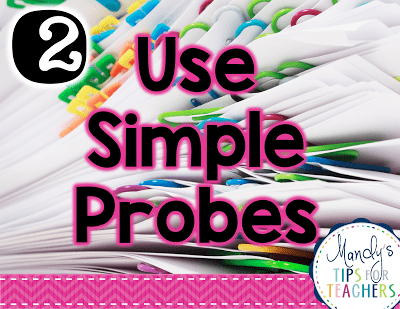
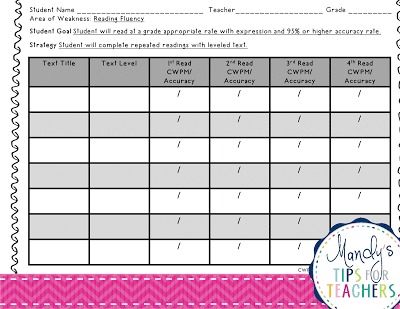
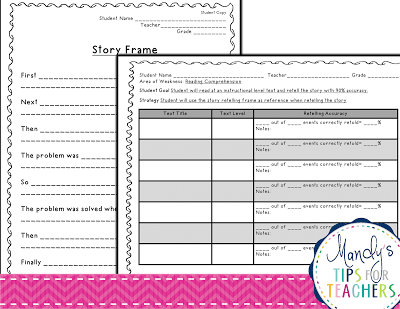
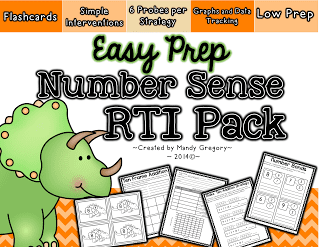

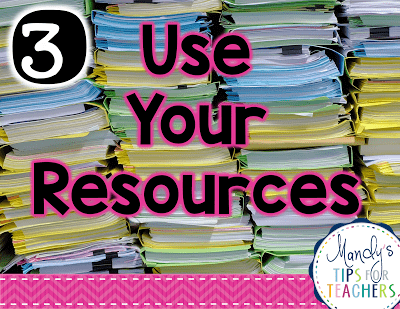
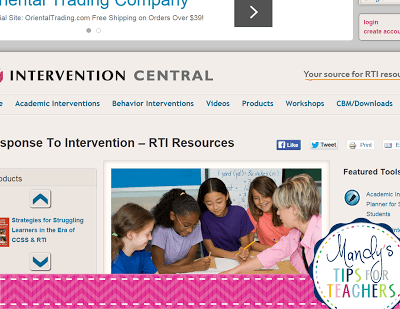

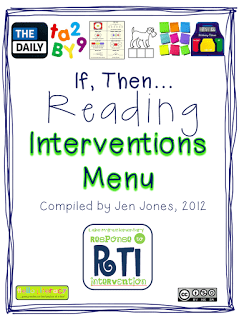
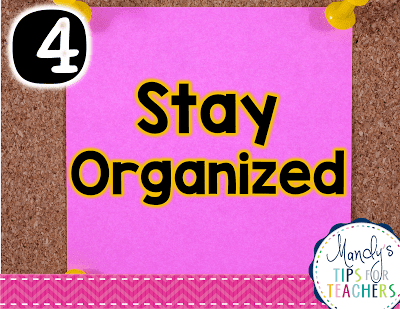
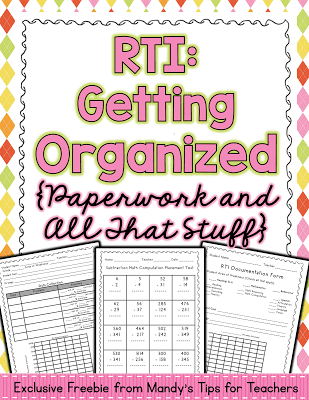
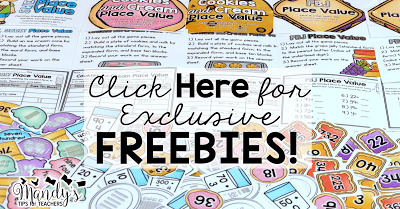



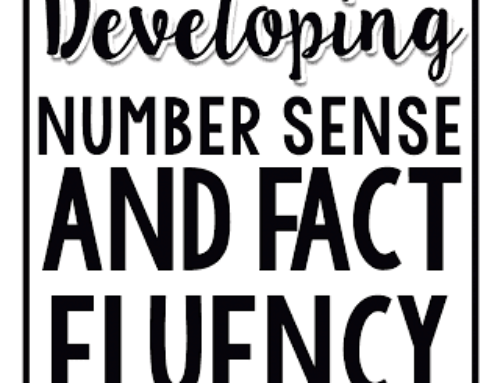

What a great post! Thank you for sharing 🙂
Courtney
Teaching in Paradise
Thank you for all of the great tips and the AMAZING freebie!
Thank you, Mandy, for the shout out! RTI is so important and can be such a huge help to students who are behind. But it can also be a lot of extra work for the teacher. Your ideas are great and I completely agree about using assessments that have clear answers and are not subjective. Thanks again!
Lori
Conversations in Literacy